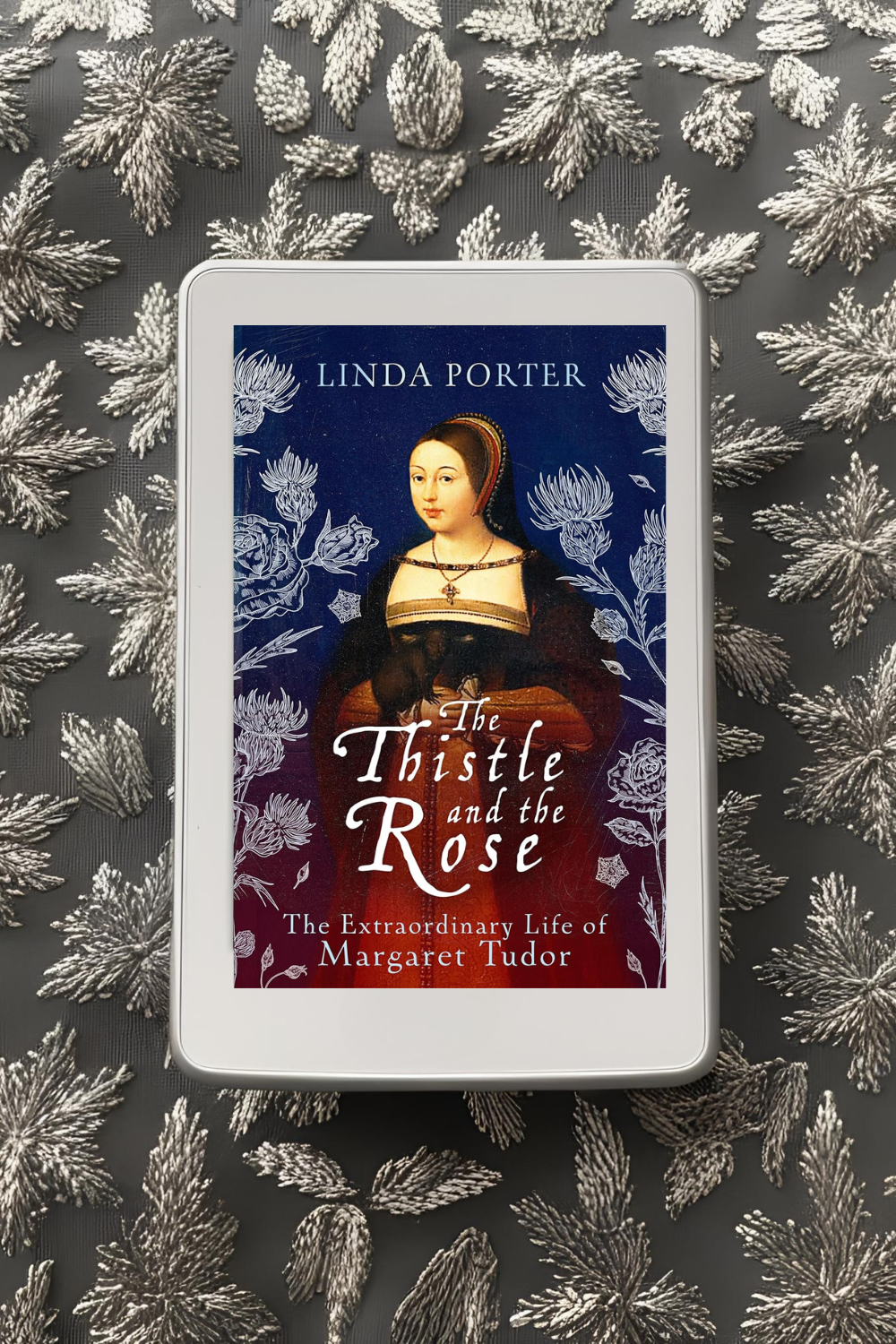Rating: ★★★½☆
Earlier this year, I found myself captivated by the book Sisters of Richard III. Eager to delve further into the period following the Wars of the Roses, I picked up The Thistle and the Rose: The Extraordinary Life of Margaret Tudor by Linda Porter. This biography promised a fresh perspective on Margaret Tudor—a figure often overshadowed by her more famous Tudor relatives—and I was keen to learn more about her story. There was a lot I liked, and a few things that didn’t quite work for me. So, let’s get into it.
Podcast Recommendation (Unsponsored!)
Before I proceed, I must give a shoutout to a fantastic episode of the Not Just the Tudors podcast. It features Linda Porter herself discussing The Thistle and the Rose. This History Hit production (available on Spotify) offered valuable context and helped me better understand the author’s perspective, sometimes even more so than the book itself. No one’s paying me to say that, I just genuinely enjoy the podcast.
Was Margaret Tudor Truly “Forgotten”?
Porter’s biography begins by grounding Margaret within the Tudor dynasty, providing essential background on her parents and the early years of the new regime, with the concern on establishing the new Tudor dynasty being an important concern. While the synopsis suggests Margaret is the “forgotten” Tudor, I would argue that her sister Mary, and even their brother Arthur, have arguably faded more from popular historical memory. Nevertheless, I approached this book with limited prior knowledge of Margaret, and I thoroughly enjoyed the journey of discovery.
One of the book’s most compelling sections details Margaret’s marriage to James IV of Scotland and her subsequent journey north to become Queen. Her royal progress was elaborate and meticulously documented. Your head might start hurting from the amount of nobility accompanying and greeting Margaret, but it’s well worth it to read through.
Margaret’s life between 1503 and 1513, her time as queen consort, was so interesting. That may be partly because I have a soft spot for James IV. Porter’s vivid descriptions of James’s effort to unite the nobles was fascinating and really made me appreciate James a lot. The lead-up to the Battle of Flodden was genuinely gripping. In fact, her depiction of the battle itself might be my favorite section. Also, while the English victory is often attributed to Katharine of Aragon (as Henry VIII was campaigning in France), I was disappointed to find that the Earl of Surrey, a character I particularly dislike, was actually the commander of the English forces. I think I’ll always feel like he’s undeserving of beating someone like James IV, so I’ll also pretend it was Queen Katharine that got him, thank you very much.
Nevertheless, the Battle of Flodden reads almost like an action scene or a compelling Game of Thrones plot point, and it was amazing. If you know other non-fiction books with battle descriptions this good, please do let me know in the comments below.
Areas Where the Narrative Felt Less Compelling
Where I struggled a bit was in how sympathetically Margaret is portrayed throughout. I recognize the historical context where female historians often strive to reclaim and defend historical women from centuries of dismissive male interpretations. However, at times, I felt Porter leaned too heavily in the opposite direction, offering justifications or glossing over some of Margaret’s more questionable decisions. I recognize that Margaret was in a difficult position following James IV’s death, and I can sort of understand justifying her second marriage. However, the subsequent events often felt like a series of struggles and decisions driven by fear and financial necessity – a very human and relatable experience, oddly enough. So it’s okay to admit that she made mistakes—what powerful figure didn’t?
The podcast helped clarify the author’s intentions, and I came away with a better understanding of where she was coming from. But on the page, I sometimes found myself wishing for a more balanced analysis.
Legacy and Lasting Impact
One crucial takeaway from this biography is the undeniable significance of Margaret Tudor’s legacy, a legacy often underestimated. Despite all of Henry VIII’s political machinations, it was Margaret’s lineage that ultimately inherited the English throne. Elizabeth I, the Virgin Queen, never married nor had children. Consequently, the crown passed to James VI of Scotland—Margaret’s great-grandson—who became James I of England, establishing the Stuart dynasty. Even the current British royal family traces its ancestry back to her. There’s a certain poetic justice to that… or perhaps I’m just being a little petty. Either way, I find it undeniably satisfying.
Final Verdict
Overall, The Thistle and the Rose was a solid 3.5-star read for me. It is meticulously researched, accessible to a general audience, and provides a detailed and engaging portrait of a woman who undoubtedly deserves greater recognition. While I didn’t always align with the author’s interpretations, the book successfully ignited my interest in both Tudor and Scottish history. I’m now eager to explore further readings on James IV and Margaret, and who knows—perhaps that will even lead to a revised perspective on this biography in the future.


Leave a Reply